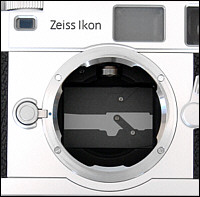 |
|
 |
||||||
|
|
|
|
|
|
|
|
||
 Revisiting
the past:
12/03/2005
Revisiting
the past:
12/03/2005That would be the not-too-distant past, as my Ektachrome arrived in the mail this week. However, work beckoned, so I was scanning and toning during my free time.
There are two new photo groups available. The first roll from Nov. 11 and another from Nov. 15.
Non-camera Issue No. 1: The chromes look good, but the scans are mildly disappointing and take a lot of work to get the color correct or close to what it should be. Could be that I'm simply asking too much of my Epson Expression 1600 flatbed scanner, which performs so nicely with black and white. It's a big scanner – much bigger than the consumer models – at 17 pounds. But I'm bumping into the limited DMax of this scanner.
Non-camera Issue No. 2: Scanning these color photos has convinced me that it's time to invest in some color calibration gear. That in itself might help alleviate some of the difficulties I'm having with scanning transparency film.
 Alternating light and dark bands provide center-weighted metering for the Zeiss Ikon. |
I forgot to mention that the Zeiss Ikon uses a somewhat different pattern on its shutter blades. Where the Bessa-R and R2 use an 18% gray for metering on the entire set of blades, the Zeiss Ikon uses something that's slightly different. The top and bottom thirds are dark gray (not black) and the middle third is a lighter gray. I'm going to ask Carl Zeiss about this, and I'll report back later. The brochure describes this as a center-weighted TTL (through the lens) system.
I think that the metering system works pretty well, but like all center-weighted systems, it can be fooled. Experience will tell you when you might need a bit of compensation or when to the AE lock. As well, wide angle lenses can fool the system because of the angle of acceptance of the lens.